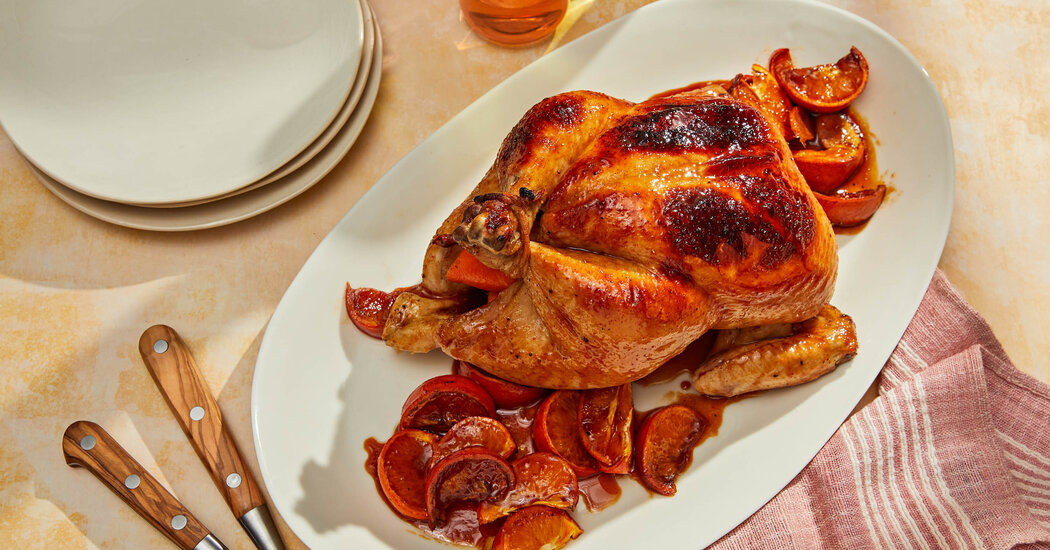
Peeling an orange releases a spritz of natural oils that coats fingers with a citrus perfume, teasing at the fruit inside. The floral zest and juicy segments are easy to love, but the pith in between, not so much.
In its raw state, the white pith is painfully bitter, but that bitterness is what makes eating the whole orange worthwhile. Usually, the peel is destined for the trash, but it has the potential to be delicious. When it’s simmered to tenderness, it soaks up the cooking liquid’s flavor while keeping its acerbic razor edge — just enough to slice through the fruit’s straightforward sweet-tartness and highlight the hint of flower blossoms.
Using the entire orange is a smart move for desserts, as you can candy it whole or blend it into cake batter, but it also tastes great in savory dishes. The obvious example: orange chicken from Panda Express (and now, most Chinese takeout restaurants). Although there are no orange pieces among the little boulders of saucy fried chicken, the popular American Chinese dish took inspiration from Chinese dishes that use the fruit itself.
Almost 35 years ago, the chef Andy Kao created the dish, along with Andrew Cherng, a founder and chairman of the company, for the first Hawaii location of Panda Express. They were inspired by many things, including the local flavors, as well as a Sichuan beef stir-fry with dried tangerine peels, a Taiwanese fried chicken dish and the sweet-and-sour flavors from the Jiangsu region of China.
“The concept of using citrus as an aromatic is actually a traditional principle in Chinese cooking,” said Andrea Cherng, the company’s chief brand officer. (I attended high school with Ms. Cherng.)
Like many American Chinese dishes — really, most dishes — a recipe is born of overlapping influences, even if it has a distinct origin story. The path to formulating a meal is less a straight highway than it is a twisty road.
For this roasted orange chicken, one of my ways of cooking American Chinese food at home, the takeout version is just one source of inspiration.
Another is whole tangerines, which season every element of the dish and have thin skins that lose their bitterness more quickly than oranges. After some fruit is juiced for the gingery soy glaze, their spent peels are stuffed into the chicken. More tangerine wedges cook alongside the bird in the same pan, their piths softening in the sauce that lacquers the bird.
The skin ends up deeply browned and the meat silky, reminiscent of the Cantonese soy sauce chicken I was raised on. As much as I love Chinese dried tangerine peels, their ocher fragments curved like petals but stiff as bark, I wanted the juiciness of fresh fruit in this preparation. You don’t have to eat the tangerines in the pan, but, if you do, with a bite of chicken slicked with glaze, you’ll taste the surprising pleasure of bitterness balanced with the simple joys of salty, sweet and sour.



